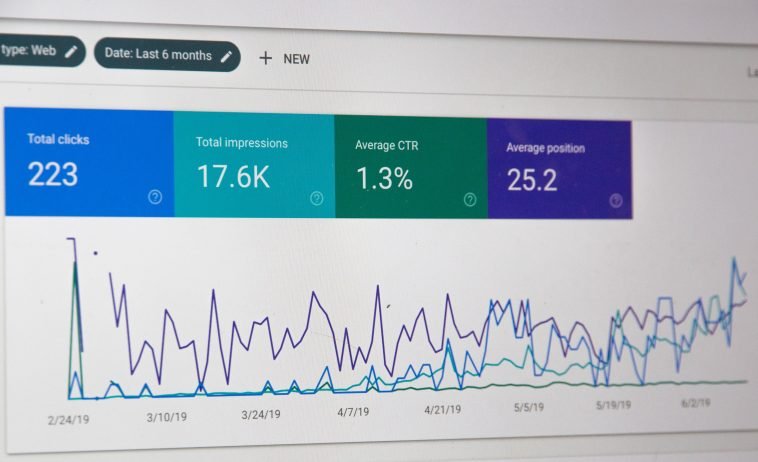Introduction.
Dropshipping has become a go-to for people who want to start an online business without handling the physical products themselves.
Imagine setting up your store and making sales without having to worry about packaging, shipping, or even maintaining an inventory.
With dropshipping, you’re essentially the middle person between the customer and the supplier, and in today’s digital world, that’s a powerful role to play.
It’s a method that allows you to start an e-commerce business with lower upfront costs, which is why so many people are drawn to it.
In this guide, I’ll walk through the key steps to get you started in selling dropshipping products online. I’ll go over how to choose your products, set up an online store, market effectively, and handle customer service.
I’ll also touch on some pros and cons so you have a balanced view and can decide if this business model is right for you.
At the end, there’s a FAQ section that covers the most common questions, like “How much does it cost to start?” or “How do I handle returns?”
So let’s get into it—by the end of this post, you’ll have a solid grasp on how to begin your dropshipping journey.
What is Dropshipping?
Dropshipping is a retail model where you don’t stock the products you sell. Instead, you set up an online store, list products, and when a customer buys something, your supplier ships the product directly to the customer.
Your role is to manage the online store, choose products, and handle customer relationships.
This business model has grown due to platforms like Shopify, WooCommerce, and AliExpress, making it easier than ever to connect with suppliers and list products quickly.
Why Dropshipping?
For anyone who wants to jump into e-commerce without the heavy upfront costs of inventory, dropshipping can be an ideal way to start. It’s flexible and relatively low risk. Here’s a quick look at some of the reasons people choose it:
- Low Startup Costs: Unlike traditional retail, you don’t need a huge budget to get started. All you need is a website and a few marketing tools.
- No Inventory Management: Inventory can be one of the most challenging parts of retail, but with dropshipping, the supplier takes care of it.
- Flexibility: You can test different products easily and pivot to trending items without the commitment of purchasing large amounts of stock.
- Scalability: As your business grows, you don’t have to worry about renting a warehouse or managing logistics—your suppliers handle all of that.
How Do I Sell Dropshipping Products Online?
Let’s dive into the step-by-step process.
1. Choose a Niche and Research Products.
The first step in starting any e-commerce business is deciding what to sell. A niche is a focused segment of the market.
Choosing a specific niche helps you target a smaller group of customers who are more likely to be interested in what you’re selling.
Tips for Choosing a Niche:
- Look for a balance between your personal interests and what’s trending.
- Use Google Trends, Amazon Best Sellers, or niche websites to see what products are popular.
- Avoid overly saturated products or niches with a lot of established competition.
2. Find Reliable Suppliers.
The success of a dropshipping business often depends on finding reliable suppliers. Suppliers will handle your inventory, package your products, and ship them to customers, so reliability is essential.
Platforms like AliExpress, Oberlo (integrated with Shopify), and SaleHoo offer a good range of products and suppliers to work with.
Considerations When Choosing Suppliers:
- Shipping Time: Look for suppliers with shorter shipping times, ideally within 7–14 days, especially if your audience expects fast delivery.
- Product Quality: Always test product samples yourself to avoid poor quality that could lead to customer complaints.
- Supplier Communication: Good communication is a must; you want a supplier who responds quickly and clearly.
3. Set Up Your Online Store.
With platforms like Shopify, WooCommerce, and BigCommerce, setting up an online store is relatively simple. These platforms offer templates and features specifically designed for dropshipping.
Steps to Set Up Your Store:
- Choose your e-commerce platform (Shopify is a popular choice for beginners).
- Select a clean, user-friendly theme that suits your brand and niche.
- Organize your store layout, add product pages, and ensure product descriptions are clear and appealing.
- Make the checkout process as easy as possible to reduce cart abandonment.
4. Market Your Products.
Once your store is up and running, it’s time to attract customers. Digital marketing is essential for dropshipping because you won’t have a physical store to rely on for foot traffic.
Effective Marketing Strategies:
- Social Media Advertising: Facebook, Instagram, and TikTok ads can help drive traffic to your store. Visual content works especially well for showing off your products.
- Search Engine Optimization (SEO): Optimize your store and product pages for search engines to help potential customers find you organically.
- Email Marketing: Collect emails from visitors and send regular updates, special offers, and new product announcements.
- Influencer Partnerships: Collaborating with influencers in your niche can bring immediate exposure and boost credibility.
5. Handle Customer Service and Returns.
Customer service plays a huge role in any e-commerce business, and it’s especially important in dropshipping because you’re not directly handling the product.
Responding to customer inquiries quickly, providing accurate tracking, and addressing complaints professionally can help you build a loyal customer base.
Best Practices for Customer Service in Dropshipping:
- Set clear policies for returns and refunds on your website.
- Communicate transparently about shipping times, especially if they’re longer than usual.
- Offer prompt responses to emails or messages, ideally within 24 hours.
Pros and Cons of Dropshipping
Pros:
- Low Startup Costs: Dropshipping doesn’t require you to purchase inventory upfront, making it accessible for many new entrepreneurs.
- No Inventory Management: You don’t have to worry about warehouse costs, inventory tracking, or shipping logistics.
- Flexibility: You can test various products or switch niches without major investment risks.
Cons:
- Lower Profit Margins: Because you’re paying a third party for fulfillment, dropshipping tends to offer lower profit margins than other retail models.
- Shipping Times: If your suppliers are overseas, shipping can be slower, which can lead to customer dissatisfaction.
- Dependence on Suppliers: You rely heavily on suppliers for inventory, product quality, and shipping. If they make mistakes, it affects your reputation.
FAQ
Q1: How much does it cost to start a dropshipping business?
Starting costs can vary, but on average, you might spend around $100–$300 initially for things like your website, marketing, and a few product samples.
Q2: How do I handle returns?
Since you don’t hold inventory, returns can be tricky. Many dropshippers arrange for returns to go back to the supplier, though each supplier’s policy may differ, so check with them in advance.
Q3: Can I dropship without a website?
Technically, yes, you could use marketplaces like eBay or Amazon, but having your own website gives you greater control over branding and customer experience.
Q4: Is dropshipping still profitable in 2023?
Absolutely, though it’s more competitive now. With the right marketing and niche selection, you can still make a profit.
Q5: How do I find trustworthy suppliers?
Use platforms like AliExpress, Oberlo, or SaleHoo, and look for suppliers with high ratings and good reviews. You can also order product samples to test quality firsthand.
Conclusion
Starting a dropshipping business is a straightforward way to enter e-commerce without a large initial investment.
While there are challenges, like lower profit margins and potential issues with suppliers, it’s a flexible, low-risk method that lets you learn the ropes of running an online business.
Plus, you have the freedom to experiment with different products and markets.
Are you ready to dive into dropshipping, or are there other e-commerce models you’re curious about?





GIPHY App Key not set. Please check settings